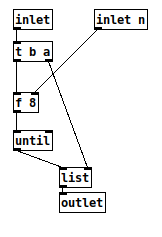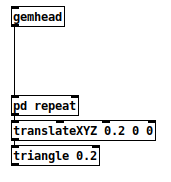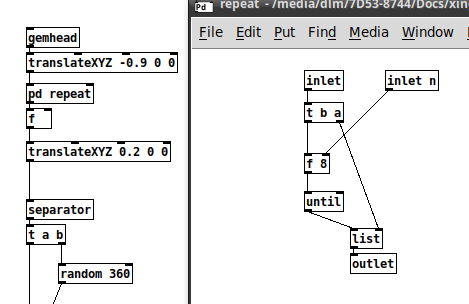@dom1817 "Actually it's quite easy to texture an image on 3D primitives with Ofelia"... oh wow, I spent quite a lot of time searching for "open frameworks texture mapping" and all I could find was a quite advanced tutorial about creating your own mesh and setting the vertex properties based on the image. I should have figured there was an easier way, but the web let me down.
@dom1817 "I was an avid Gem user and I'm switching to Ofelia because it’s more flexible" -- Oh yes, I agree. I could actually say the same about Pd/Max vs SuperCollider  It seems to be still the case, after 30+ years of dataflows, that boxes and wires can't beat code for iteration, structured data and parallel operations. E.g., this:
It seems to be still the case, after 30+ years of dataflows, that boxes and wires can't beat code for iteration, structured data and parallel operations. E.g., this:
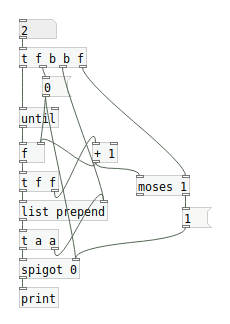
vs Array.series(n, 0, 1) (core function in SC, no add-ons), I guess about 5-10 seconds to type. There's no way you can put all those objects together in 10 seconds... so you spend a lot of time on mouse mechanics rather than creating stuff. (Sorry, I know this is a Pd hangout...) So then you get, as mentioned, user extensions in various states of (dis)repair to fill the gaps, and compatibility problems etc. (FWIW, SC faces exactly the same problems with user extensions.)
So yeah, I'd love to get the kids to code. The trouble is that it's a big mental leap for them to visualize state (I've tried...), but some of them can understand how a number comes out of a slider into [mtof] etc. So if this is the gateway that works for them, so be it. (The courses are "audio synthesis theory" and "interactive multimedia," not "programming for digital arts"  so the programming methodology is secondary.)
so the programming methodology is secondary.)
I'm tempted to try Ofelia with them -- and it's very nice how you can integrate Of scripting with Pd's control layer -- but I've had experiences in the past where their eyes just glaze over the second I bring any code into it. Some kind of mental block, like "we can maybe do the visual stuff but code??? Nope, we won't even try."
hjh
PS Oh, and IMO cyclone and zexy are indispensable.




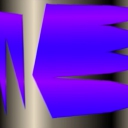
 It seems to be still the case, after 30+ years of dataflows, that boxes and wires can't beat code for iteration, structured data and parallel operations. E.g., this:
It seems to be still the case, after 30+ years of dataflows, that boxes and wires can't beat code for iteration, structured data and parallel operations. E.g., this:
 so the programming methodology is secondary.)
so the programming methodology is secondary.)
